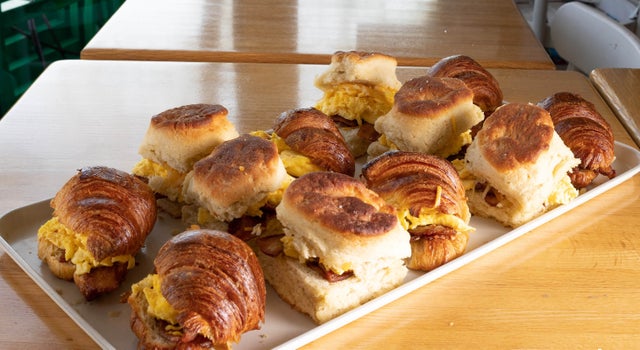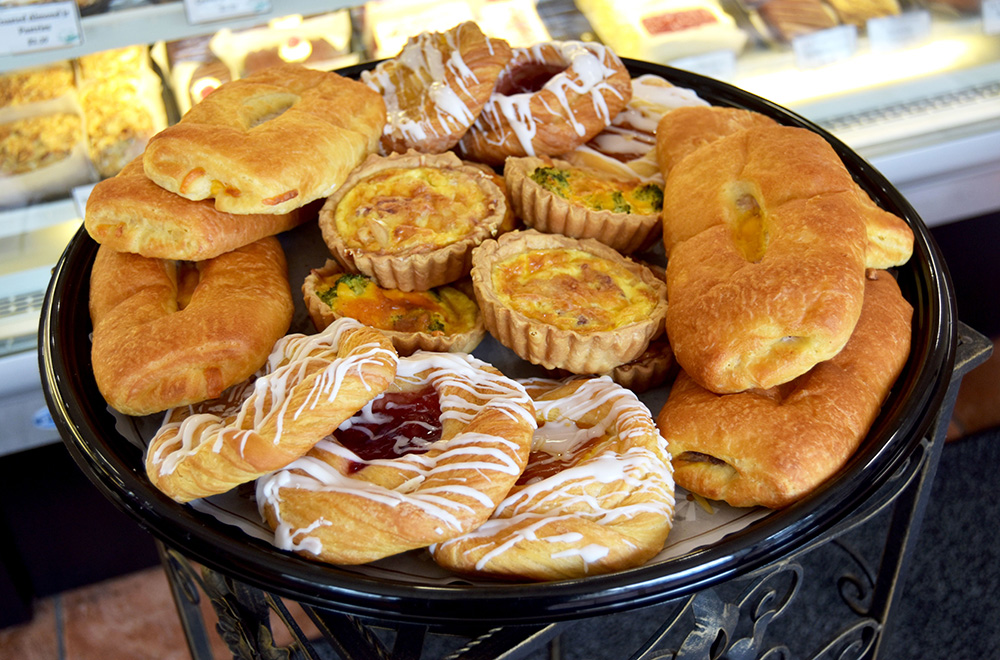Planning a Birthday Party Maddington? Tips for a Great Celebration
Planning a Birthday Party Maddington? Tips for a Great Celebration
Blog Article
Comprehending the Art of Pastry Shop Products: From Freshly Baked Breads to Alluring Pastries and Finger Foods
From the scientific research behind the perfect loaf of bread, where fermentation and gluten development play pivotal duties, to the finesse needed for developing layered pastries, each element exposes a compelling narrative of workmanship. The adaptability of finger foods shows exactly how flavor and appearance can be artfully integrated to engage varied preference preferences.
The Scientific Research of Bread Making
At the heart of every loaf of bread lies a fascinating interaction of chemistry and biology. The process of bread making starts with the combination of flour, water, yeast, and salt-- each active ingredient playing a vital role in the last product. Flour has proteins, primarily glutenin and gliadin, which, when combined with water, form gluten (Birthday Party Maddington). This elastic network is essential for capturing gases produced during fermentation.
Yeast, a living microorganism, ferments the sugars present in the flour, creating co2 and alcohol at the same time. The co2 gas develops bubbles in the dough, causing it to rise and establish a light appearance. The temperature and humidity during fermentation dramatically influence yeast activity and, as a result, the bread's taste and appearance.

Learning Pastry Strategies
How can one attain the delicate equilibrium of texture and taste that defines exceptional pastry? Understanding pastry strategies requires a deep understanding of active ingredients, methods, and the scientific research behind them. Fundamental to this craft is the choice of top quality active ingredients-- flour, butter, sugar, and eggs-- each playing an important duty in the final item's flavor and structure.
The strategy of lamination, which involves folding layers of dough and butter, develops the desired flakiness in pastries like croissants and smoke bread. Accuracy in temperature is crucial, as butter should stay cool to guarantee optimum layers. Correct blending methods, such as the creaming method for cakes, make sure also unification of air and fat, resulting in a light and airy crumb.
Furthermore, preserving the appropriate moisture degrees during baking can substantially influence the end result, ensuring that pastries increase properly and accomplish that golden-brown surface. The art of pastry additionally requires persistence and method; each effort enhances one's skill and understanding of the intricate equilibrium needed to develop alluring breads that delight the detects. Mastery in these techniques eventually identifies a skilled bread cook from an amateur.
Sorts Of Finger Foods
The globe of cooking thrills prolongs beyond pastries to incorporate a vast variety of finger foods, which are their website commemorated for their comfort and adaptability. These bite-sized treats are perfect for social celebrations, supplying a variety of flavors and textures that satisfy diverse palates.

On the sweeter side, bite-sized cupcakes and mini tarts provide a wonderful surface to any kind of dish, appealing to those with a craving for sweets. Additionally, cheese and charcuterie boards work as an innovative selection, allowing guests to customize their bites with a selection of meats, fruits, cheeses, and nuts.
Flavor Profiles in Baking
Baking is an intricate dancing of taste accounts that integrates sweet, savory, and umami notes to create an unified experience for the taste. Comprehending these profiles is important for bakers seeking to boost their productions.
Active ingredients such as chocolate and sugar introduce intricate wonderful notes that can either dominate or match other tastes. Ingredients like natural herbs, spices, and cheeses can click to read more change a basic dough right into a complex taste experience.
Umami, often overlooked in cooking, plays a significant function in enriching tastes. Ingredients such as aged cheeses, fermented items, or perhaps specific nuts add to a mouthwatering deepness that enhances general preference.
In addition, the interaction of acidity from ingredients like buttermilk or citrus zest can brighten flavors, supplying a refreshing counterpoint to sweet taste. By thoughtfully integrating these taste accounts, bakers can craft products that resonate with diverse tastes buds, developing an extraordinary cooking experience. Ultimately, mastering flavor profiles is crucial to technology in the world of baking.
Necessary Cooking Devices and Active Ingredients
Understanding taste accounts in baking sets the phase for picking the right devices and components that help with the creation of exceptional baked items. A trusted collection of baking frying pans-- such as sheet frying pans, loaf pans, and cake pans-- is essential for achieving wanted forms and textures.
Flour serves as the backbone of the majority of recipes; picking the best kind-- be it bread, all-purpose, or bread flour-- can dramatically affect the end result. Cooking powder and baking soft drink are important for developing lift in pastries and cakes.
In addition, incorporating taste boosters like vanilla extract, seasonings, and citrus zest can raise your developments. By ensuring access to these basic devices and active ingredients, bakers can confidently begin on their cooking journey, crafting a diverse variety of fascinating baked goods.
Final Thought
In final thought, the art of pastry shop products encompasses a profound understanding of both clinical concepts and imaginative techniques. Proficiency in bread production, bread preparation, and finger food presentation discloses the intricate connections in between components and procedures. Checking out varied flavor profiles improves the baking experience, while essential devices and active ingredients supply the structure for success. Eventually, the enchanting globe of baking thrives on the unified interplay of science and creativity, resulting in a myriad of delightful cooking productions.
How can one achieve the fragile balance of appearance and taste that defines exceptional bread? Essential to this craft is the selection of high-quality components-- flour, butter, sugar, and eggs-- each playing an important role in the last product's taste and texture.

Understanding flavor profiles in baking collections the phase for picking the right devices and visit this site right here active ingredients that facilitate the creation of remarkable baked goods. Exploring diverse flavor profiles enriches the baking experience, while important tools and ingredients offer the foundation for success.
Report this page